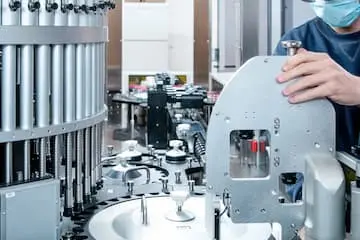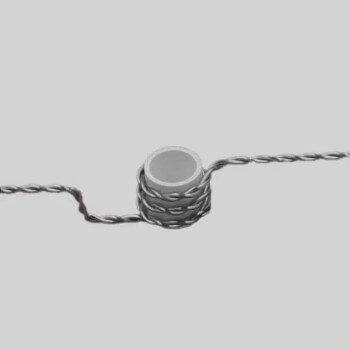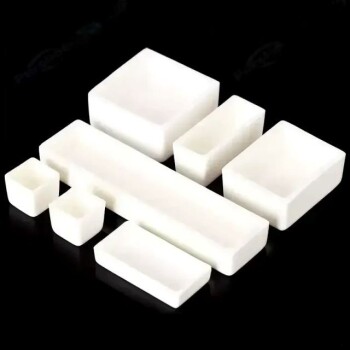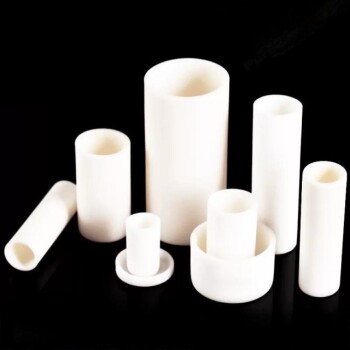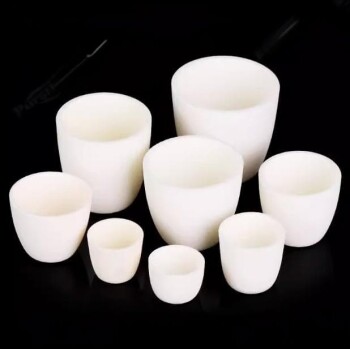Alumina crucibles have advantageous properties for a wide range of applications. They have a high melting point, making them suitable for high-temperature reactions. They are chemically inert, ensuring no contamination or reactions with the materials being processed. Alumina crucibles also have excellent thermal shock resistance, withstanding rapid temperature changes without breaking. They come in different shapes and sizes and are used in laboratories and industries like metallurgy and ceramics.
Toggle Categories
Get Instant Support
Choose your preferred way to connect with our team
-
Get Free Quote Fill out form for detailed pricing
-
Send Email Detailed inquiry support
-
WhatsApp Quick mobile chat
Response Time
Within 8 hours on working days, 24 hours on holidays
alumina crucible
In summary, alumina crucibles are ceramic containers made from alumina (aluminum oxide) that are used for high-temperature applications. They possess high melting points, chemical inertness, and thermal shock resistance, making them suitable for processes involving extreme heat, chemical reactions, and rapid temperature changes. Alumina crucibles are widely used in laboratories and industries such as metallurgy, ceramics, and chemical processing for various applications requiring heat treatment, sample preparation, and material processing.
FAQ
What Are The Common Applications Of Alumina Crucibles?
What Are The Advantages Of Using Alumina Crucibles?
How Should Alumina Crucibles Be Handled And Maintained?
REQUEST A QUOTE
Our professional team will reply to you within one business day. Please feel free to contact us!
Related Articles

Cracked Tubes, Contaminated Samples? Your Furnace Tube Is The Hidden Culprit
Frustrated by failed experiments? Learn why your furnace tube material—not your process settings—is the critical variable causing inconsistent results.

How to Choose Crucible Materials That Prevent Chemical Degradation in Vacuum Induction Melting
Learn how to choose crucible materials for vacuum induction melting to prevent chemical degradation and optimize alloy purity. Essential guide for industrial applications.

Why Ultra-Low Temps are Non-Negotiable: The Science Behind Preserving Critical Biological Materials
Discover why ultra-low temperature freezers (-86°C) are vital for preserving cells, proteins, and vaccines. Learn the science behind ULT storage best practices.

Precision Ceramic Materials for Energy Conversion Applications
Overview of various ceramic materials used in energy conversion technologies, including heaters, piezoelectric ceramics, and solid oxide fuel cells.

The 5 Hottest Advanced Ceramic Powders Currently Available!
An overview of the top 5 advanced ceramic powders: High Purity Aluminum Oxide, Boehmite, Aluminum Nitride, Silicon Nitride, and Spherical Alumina, highlighting their applications and market trends.

Mechanical Properties and Structural Enhancements of Ceramics
An in-depth analysis of the mechanical properties of ceramics, including strengths, weaknesses, and methods for improvement.

Advancements in Engineering Ceramic Materials
Explores new engineering ceramics with exceptional properties and applications in harsh environments, comparing them to traditional materials.

Structure and Properties of High-Temperature Engineering Ceramics
Explore the applications, structural features, and performance advantages of high-temperature engineering ceramics across various industries.

Fused Silica Crucible: Properties, Applications, and Preparation Process
An in-depth look at the properties, applications, and preparation methods of fused silica crucibles in the solar photovoltaic industry.

Graphite Crucible in the Future Production of Third Generation Semiconductor Compounds
Explores the role and future trends of graphite crucibles in the production of third-generation semiconductor materials.

High Purity Graphite Crucible: Features, Production, and Usage
An in-depth look at high purity graphite crucibles, their production processes, and their industrial applications.

Preparation Methods for High Purity Aluminum Oxide
An overview of various methods to produce high purity aluminum oxide, including hydrolysis, pyrolysis, modified Bayer, precipitation, baking, sol-gel, and spark discharge methods.

Inorganic Non-Metallic Materials: Crucibles
An overview of crucibles made from various inorganic non-metallic materials, their uses, technical parameters, and advantages.

Preventing Sample Bonding in Aluminum Oxide Crucible Sintering
Strategies to prevent sample bonding during sintering in aluminum oxide crucibles.

Preparation and Performance of Alumina Crucibles for Vacuum Induction Melting Furnace
This article discusses the preparation process and performance benefits of alumina crucibles for vacuum induction melting furnaces, emphasizing thermal stability and long service life.

Ceramic Alumina Crucible for Thermal Analysis Test Containers
An in-depth guide on selecting and using ceramic alumina crucibles for thermal analysis tests, focusing on factors affecting test results.

Alumina Crucibles in Precision Casting
Explores the use of alumina crucibles in precision casting, focusing on their properties and advantages in high-temperature alloy melting.

Comprehensive Guide to Alumina Crucibles in Powder Metallurgy
An in-depth look at the properties, applications, and usage of alumina crucibles in powder metallurgy processes.

Crucible Types, Properties, and Applications
A detailed overview of various crucible types, their properties, and application areas in laboratory and industrial settings.

Introduction to Various Ceramic Crucibles
An overview of different types of ceramic crucibles, their properties, and applications.
